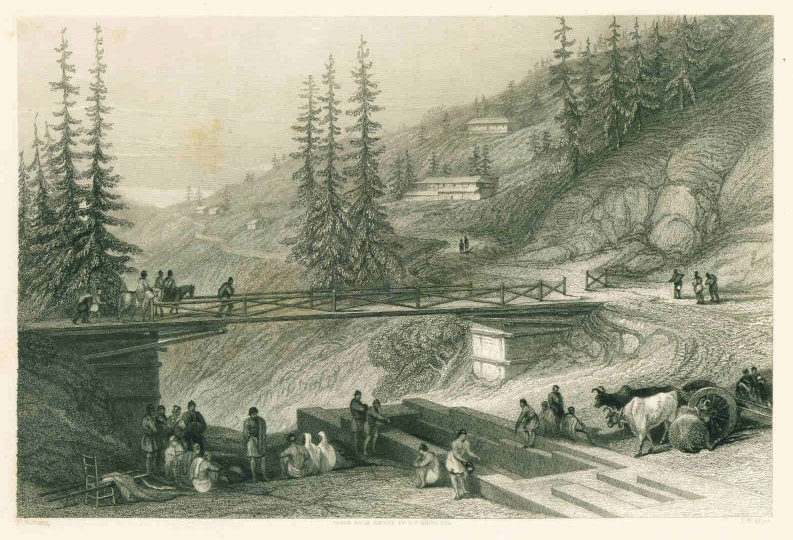
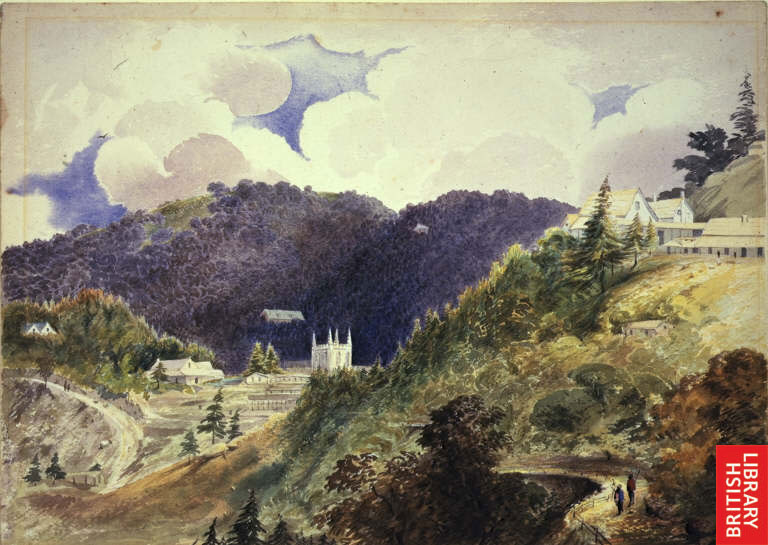
Simla, 1845
Simla, with Christ Church in the middle, 1855
Simla was annexed by the British in 1819 after the Gurkha War. A military camp was established in 1827 when there was only one cottage in the town. The climate being what it was, the British soon started building summer cottages and there were more than a hundred within ten years.
Simla had an attractive location because it was only four days march from Loodianah, a British army depot which had great strategic value during the military operations. Simla also proved to be a very agreeable refuge from the burning plains of Hindustan. It was only after JBW had left India that Simla become much more popular. Sir John Lawrence, Viceroy of India 1864–1869, decided to relocate the country's administration from Calcutta during the Indian summer even though Simla was over 1,000 miles away. Simla also became the Headquarters of the Commander-in-Chief of the Indian Army and many Departments of the Government, as well as being the summer capital of the regional Government of the Punjab. They were joined during the hot weather by many of the British wives and daughters of the men who remained in the plains. Living costs in Simla were very expensive, having an ideal climate and thus being desirable, as well as having limited accommodation. British soldiers, merchants, and civil servants moved here each year to escape from the heat during summer in the Indo-Gangetic plain. The presence of many bachelors and unattached men, as well as the many women passing the hot weather there, gave Simla a reputation for adultery, or at least gossip about adultery.
Here are two other images of Simla, both from the 1860s when JBW and Catherine would have been there (even in the winter).
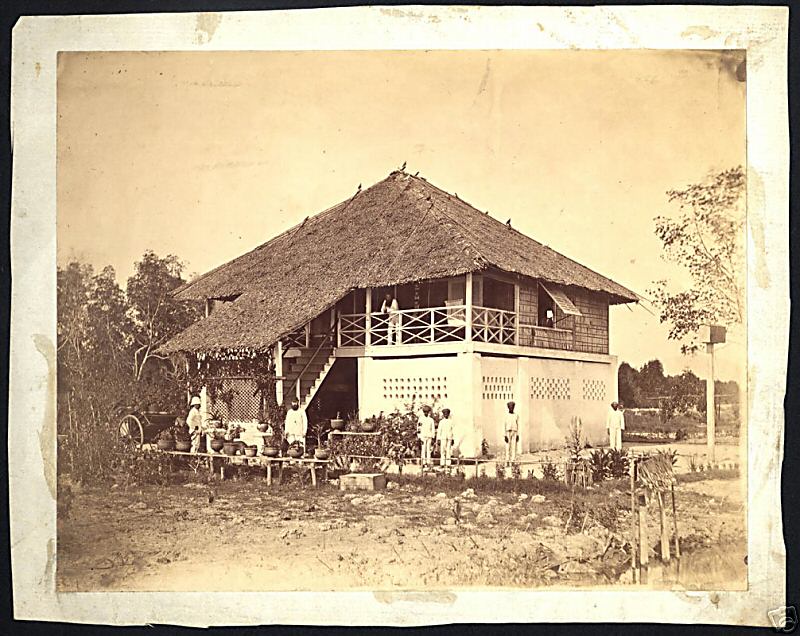
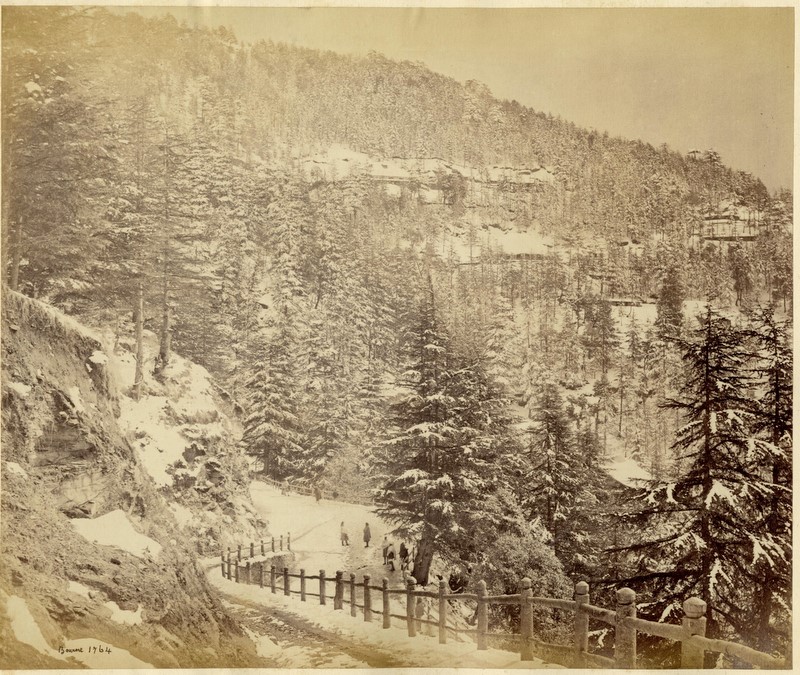
The next 2 images are from the 1880s.
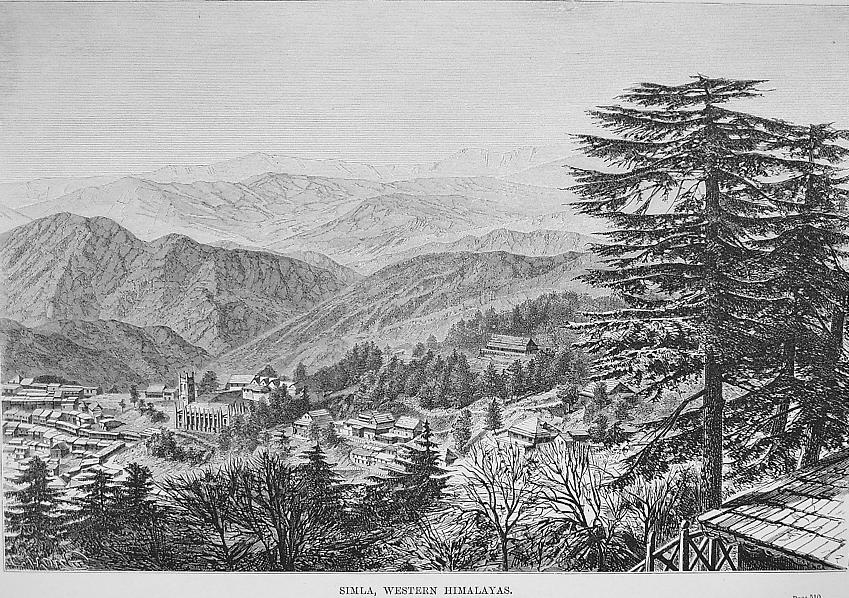
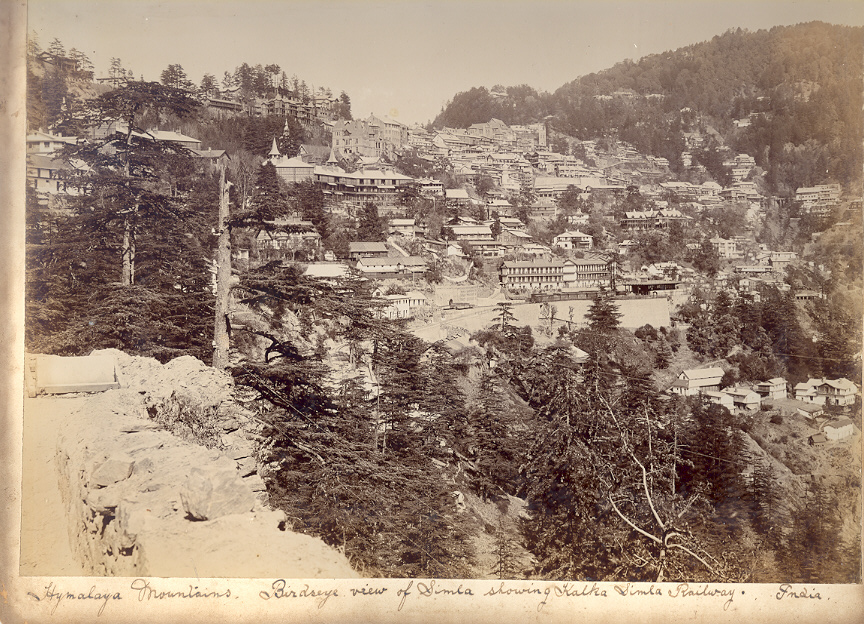
Finally, we have an image of today's Simla.
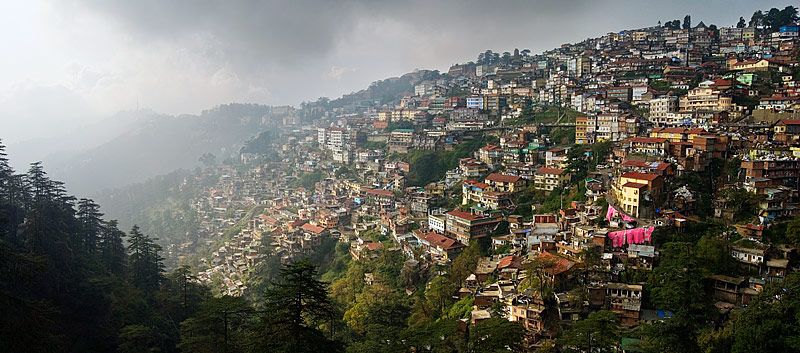
Sources
Various web sites, including:
Wikipedia: Shimla: http://en.wikipedia.org/wiki/Shimla
Images from: http://www.columbia.edu/itc/mealac/pritchett/00routesdata/1800_1899/britishrule/simla/simla.html